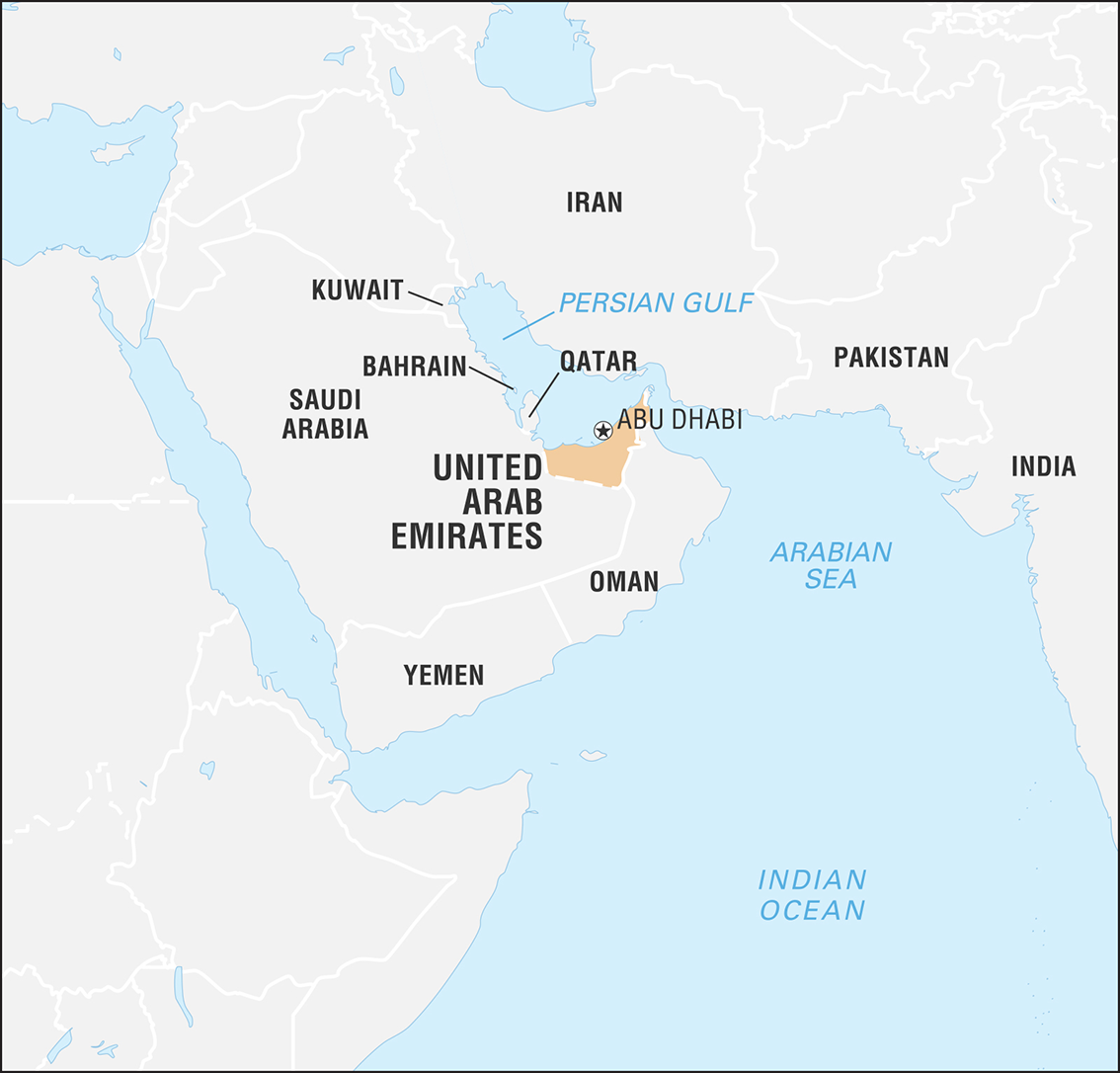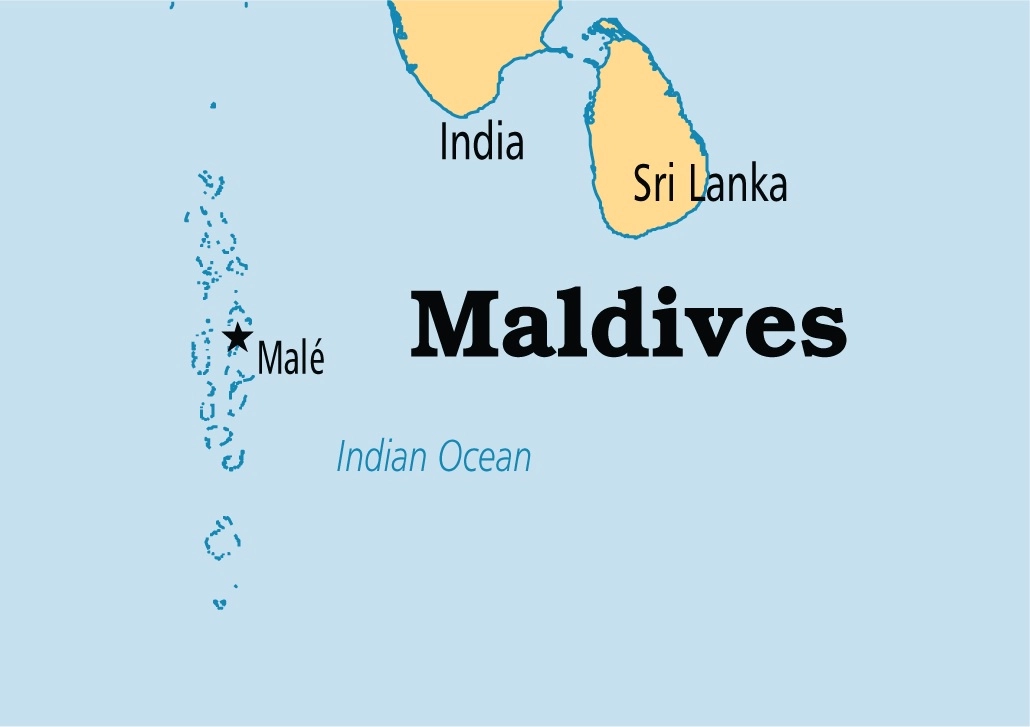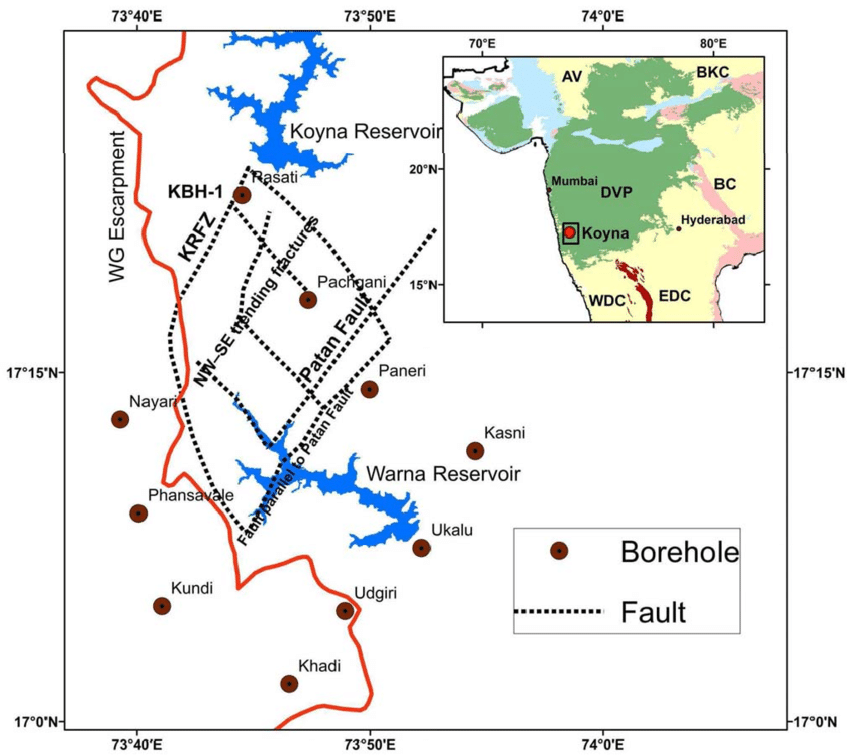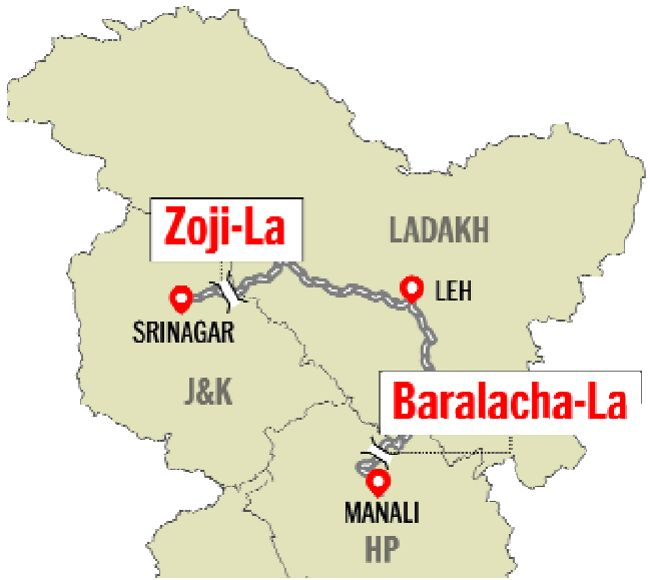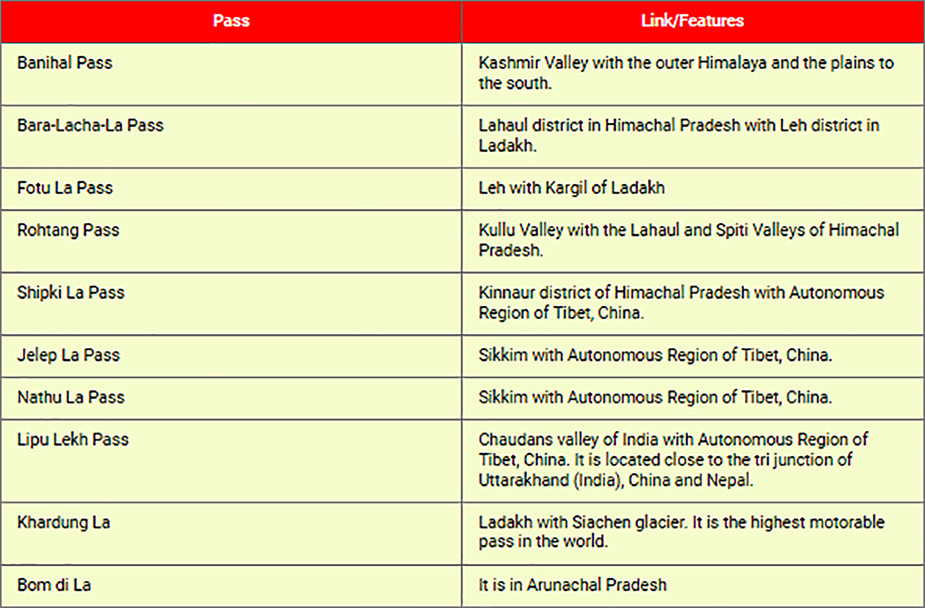Science & Technology
Defence Space Command Agency of Australia
For Prelims: Space Command Structures around the World, Defence Space Research Agency of India.
For Mains: Militarisation of Space, Need for space defence for India, Need for Multilateral binding agreement on Space use.
Why in News?
Recently, Australia has announced a new Defence Space Command Agency to counter the growing influence of Russia and China in space.
- It will help Australia in developing and advocating space-specific priorities within the government, industry, allies and even international partners.
What will be the Function of the Defence Space Command Agency?
- The agency will provide training to people to become space specialists, help conduct strategic space planning, and be able to be a part of any developments regarding the refinement of space policy.
- Australia will be setting scientific and space priorities with the agency in place and will be working towards creating an efficient space architecture.
- All the operations of the agency – including design, construction, maintenance – will be within the purview of the standards and limitations of the Defence Ministry of Australia.
What are the Space Command Structures around the World?
- Spacecom - US Space Force.
- Defence Space Agency (DSA) - India
- Joint Space Command (France)
- Iranian Space Command (Islamic Revolutionary Guard Corps Aerospace Force)
- Russian Space Forces (Russian Aerospace Forces)
- United Kingdom Space Command (Royal Air Force)
What is the Concept of Militarization and Weaponization of Outer Space?
- The concept for space weaponization came up in the early 1980s through the “Strategic Defence Initiative” (SDI) also known as the “Star Wars” programme of the United States.
- The idea was to put a large number of satellites into orbit that would detect the launch of enemy missiles and then shoot them down.
- Militarisation Vs Weaponization of Outer Space:
- Weaponization refers to the placement in orbit of space-based devices that have destructive capacity.
- Militarisation of outer space refers to the use of space in support of ground, sea and air-based military operations.
What is the Issue of Militarisation and Weaponization of Space?
- Global commons under threat: The Global Commons for Outer Space is under threat in the present times. Increasing militarization of outer space has started the race of weaponizing outer space.
- For example, Anti-SAT missiles can destroy satellites in outer space.
- Threat to Global Communication System: Anti-satellite missiles can destroy the communication satellites which would bring down the communication system.
- Uplink and downlink jamming of satellites would also negatively impact the communication.
- Future Security Concerns: There has been an increase in the number of nations with interest in Space, leading to power rivalries, and the consequent failure to make common ground on Space security to prevent its militarization and weaponization.
- Earth is Our Only Home: The ensuing arms race for weaponization of outer space would create an environment of uncertainty, suspicion, miscalculations, competition and aggressive deployment between nations, which may lead to war.
- Space wars can be so disastrous that it may destroy our only home in the Known Universe - Earth.
What is the Status of Outer Space Weaponization for India?
- India conducted a successful anti-satellite test in March 2019. The test placed India in the company of China, Russia, and the United States in terms of fielding a practical anti-satellite capability.
- In 2019, India also established two new bureaucracies for space, the Defense Space Research Organization (DSRO) and the Defense Space Agency (DSA).
- DSRO is a research organization geared toward facilitating the development of civilian space technology for military purposes, while DSA plays a role similar to that of a combatant command in the United States, integrating space assets from the army, navy, and air force and formulating strategy.
- India conducted its first integrated space warfare exercise in July 2019, bringing together personnel from across the services. The exercise focused on using communications and reconnaissance satellites to integrate intelligence and fires across the range of Indian military assets, indicating a firm understanding of the necessity of access to space.
- Some within the Indian defense community have argued for more aggressive reforms, including the establishment of a military space service similar to the US Space Force.
- This would facilitate the defense of India’s growing satellite network, while also laying the groundwork for coercive action against enemy networks.
What are the Global Rules and Demands related to Space?
- Outer Space Treaty of 1967:
- The treaty prohibits countries from placing into orbit around the Earth “any objects carrying nuclear weapons or any other kinds of weapons of mass destruction”.
- It also prohibits the stationing of such weapons on celestial bodies, like the moon, or in outer space. The moon and other celestial bodies shall be used by all state parties to the treaty exclusively for peaceful purposes.
- India is a party to the Outer Space Treaty.
- There are four more multilateral treaties that deal with specific concepts agreed to in the Outer Space Treaty:
- The Rescue Agreement of 1968
- The Space Liability Convention of 1972
- The Registration Convention of 1976
- The Moon Treaty of 1979
- The United Nations Committee on the Peaceful Uses of Outer Space (COPUOS) oversees these treaties and other questions of space jurisdiction. None of these, however, prohibits the Anti-Sat missions of various countries.
- TCBMS: The international community has been debating the need to introduce Transparency and Confidence-Building Measures in outer space activities (TCBMS).
- In this regard, the European Union (EU) has also prepared a draft code of conduct (CoC). However, major powers are yet to agree on the idea of establishing a CoC conduct.
- PPWT: Another important idea that has been put on the table jointly by Russia and China is the Prevention of the Placement of Weapons in Outer Space (PPWT) instead of only Weapons of Mass Destruction which is resisted by the US and the EU.
Way Forward
- For the welfare of the entire mankind, it is imperative that the notion of space as a global common is restored.
- A centrally controlled governance system which ensures a responsible and safe ecosystem for space exploration and unhindered access to a peaceful space for our future generations is the need of the hour.
International Relations
India-UAE CEPA
For Prelims: Types of Trade Agreements, India-UAE CEPA, Different forms of Trade Agreements.
For Mains: India and its Neighbourhood, Bilateral Groupings & Agreements, India-UAE Relations
Why in News?
Recently, the Comprehensive Economic Partnership Agreement (CEPA) between India and the United Arab Emirates (UAE) got finalised.
- India-UAE CEPA was signed on 18th February 2022, during the India-UAE Virtual Summit. The Agreement is expected to enter into force on 1st May 2022.
- CEPA provides for an institutional mechanism to encourage and improve trade between the two countries.
What are the Salient features of India-UAE CEPA?
- The Agreement is a comprehensive agreement, which will cover:
- Trade-in Goods.
- Rules of Origin.
- Trade-in Services.
- Technical Barriers to Trade (TBT).
- Sanitary and Phytosanitary (SPS) measures.
- Dispute Settlement.
- Movement of Natural Persons.
- Telecom.
- Customs Procedures.
- Pharmaceutical products.
- Government Procurement.
- Intellectual Property Rights (IPR), Investment, Digital Trade and Cooperation in other Areas.
What will be the Benefits of India-UAE CEPA?
- Trade-in Goods: India will benefit from preferential market access provided by the UAE, especially for all labour-intensive sectors.
- Such as Gems and Jewellery, Textiles, leather, footwear, sports goods, plastics, furniture, agricultural and wood products, engineering products, medical devices, and Automobiles.
- Trade-in Services: Both India and UAE have offered each other market access to the broad service sectors.
- Such as ‘business services’, ‘communication services’, ‘construction and related engineering services, ‘distribution services’, ‘educational services’, ‘environmental services’, ‘financial services, ‘health-related and social services, ‘tourism and travel-related services, ‘recreational cultural and sporting services’ and ‘transport services’.
- Trade-in Pharmaceuticals: Both sides have also agreed to a separate Annex on Pharmaceuticals to facilitate access to Indian pharmaceuticals products, especially automatic registration and marketing authorisation in 90 days for products meeting specified criteria.
What is the Background of India-UAE CEPA?
- About: India and the UAE enjoy excellent bilateral relations, which are deep-rooted and historical, sustained and nurtured by close cultural and civilizational affinities, frequent high-level political interactions, and vibrant people to people linkages.
- The India-UAE comprehensive strategic partnership was initiated during the visit of the Prime Minister of India to UAE in 2015.
- Status of Trade: India and the UAE have been each other’s leading trading partners.
- Trade: From USD 180 million per annum in the 1970s, India-UAE bilateral trade has steadily increased to USD 60 billion in FY 2019-20 making the UAE, India's third-largest trading partner.
- Exports: The UAE is also the second-largest export destination of India.
- Investments: The UAE is also the eighth largest investor in India with an estimated investment of USD 18 billion.
- Moreover, India and the UAE have recently entered into a Memorandum of Understanding (MoU) whereby the UAE has committed USD 75 billion towards infrastructure development in India.
- Economic Importance of UAE: The UAE is an important source of India’s energy supply and a key partner of India in the development of strategic petroleum reserves, upstream, and downstream petroleum sectors.
- Significance: The India-UAE CEPA will further cement the already deep, close and strategic relations between the two countries and will create new employment opportunities, raise living standards, and improve the general welfare of the peoples of the two countries.
What is CEPA?
- It is a kind of free trade pact that covers negotiation on the trade in services and investment, and other areas of economic partnership.
- It may even consider negotiation in areas such as trade facilitation and customs cooperation, competition, and IPR.
- Partnership agreements or cooperation agreements are more comprehensive than Free Trade Agreements.
- CEPA also looks into the regulatory aspect of trade and encompasses an agreement covering the regulatory issues.
- India has signed CEPAs with South Korea and Japan.
What are other Types of Trade Agreements?
- Free Trade Agreement (FTA):
- It is an agreement in which two or more countries agree to provide preferential trade terms, tariff concession etc. to the partner country.
- India has negotiated FTA with many countries e.g. Sri Lanka and various trading blocs as well e.g. Association of Southeast Asians Nations (ASEAN).
- Regional Comprehensive Economic Partnership (RCEP) is a Free Trade Agreement (FTA) between the ten member states of the ASEAN and the six countries (Australia, China, Japan, South Korea, India and New Zealand) with which ASEAN has existing FTAs.
- Preferential Trade Agreement (PTA):
- In this type of agreement, two or more partners give preferential right of entry to certain products. This is done by reducing duties on an agreed number of tariff lines.
- Tariffs may even be reduced to zero for some products even in a PTA. India signed a PTA with Afghanistan.
- Comprehensive Economic Cooperation Agreement (CECA):
- CECA generally covers negotiation on trade tariff and TRQ (Tariff Rate Quotas) rates only. It is not as comprehensive as CEPA. India has signed CECA with Malaysia.
- Bilateral Investment Treaty (BIT):
- It is a bilateral agreement in which two countries sit together and decide the conditions for private investments by citizens and firms of the two countries.
- Trade and Investment Framework Agreement (TIFA):
- It is a trade pact between two or more countries which establishes a framework for expanding trade and resolving outstanding disputes between countries.
UPSC Civil Services Examination, Previous Year Questions (PYQs)
Q.Consider the following countries: (2018)
- Australia
- Canada
- China
- India
- Japan
- USA
Which of the above are among the ‘free-trade partners’ of ASEAN?
(a) 1, 2, 4 and 5
(b) 3, 4, 5 and 6
(c) 1, 3, 4 and 5
(d) 2, 3, 4 and 6
Ans: (c)
Q. The term ‘Regional Comprehensive Economic Partnership’ often appears in the news in the context of the affairs of a group of countries known as (2016)
(a) G20
(b) ASEAN
(c) SCO
(d) SAARC
Ans: (b)
International Relations
India Maldives Security Partnership
For Prelims: SAARC, SASEC, Operation Cactus, Mission SAGAR, Greater Male Connectivity Project.
For Mains: India-Maldives Relations, India and its Neighbourhood, Bilateral Groupings & Agreements.
Why in News?
Recently, the National College for Policing and Law Enforcement (NCPLE) was inaugurated by India’s External Affairs Minister during his two day visit to Maldives.
- NCPLE is one of India's largest funded projects in the island nation - in the Maldives' Addu City.
What are the Highlights of the Visit?
- National College for Policing and Law Enforcement (NCPLE): One of the objectives of this training academy is to address the challenges of violent extremism and prevent radicalisation.
- It will enhance cooperation between the two countries in tackling these issues.
- On the domestic level in the Maldives, the training academy would help strengthen law enforcement abilities and counter drug trafficking, a major concern in the country.
- MoU for Training: A memorandum of understanding was signed by the Maldives Police Service and India’s Sardar Vallabhbhai Patel National Police Academy to enhance cooperation in training and capacity building.
- India has increased the number of training slots for the Maldives at the police academy to eight.
- Support for Infrastructure: India’s Exim Bank is providing more than USD40 million to create police infrastructure facilities across the Maldives, including 61 police stations, divisional headquarters, detention centres and barracks.
- Other Projects: Signing of an USD80-million contract for the Addu reclamation and shore protection project.
- A drug detoxification and rehabilitation centre in Addu built with Indian assistance. The centre is one of 20 high impact community development projects being implemented by India in areas such as healthcare, education, fisheries, tourism, sports and culture.
What is the Current State of India-Maldives Relations?
- Geo-Strategic Importance:
- Maldives, a Toll Gate in Indian Ocean:
- Located at the southern and northern parts of this island chain lies the two important Sea Lanes of Communication (SLOCs).
- These SLOCs are critical for maritime trade flow between the Gulf of Aden and Gulf of Hormuz in West Asia and the Strait of Malacca in Southeast Asia.
- Nearly 50% of India’s external trade and 80% of its energy imports transit these SLOCs in the Arabian Sea.
- Part of Important Groupings: Besides, Maldives is a member of the South Asian Association for Regional Cooperation (SAARC) and the South Asia Subregional Economic Cooperation (SASEC).
- Maldives, a Toll Gate in Indian Ocean:
- Cooperation Between India & Maldives:
- Security Cooperation: Through the decades, India has rushed emergency assistance to the Maldives, whenever sought.
- In 1988, when armed mercenaries attempted a coup against President Maumoon Abdul Gayoom, India sent paratroopers and Navy vessels and restored the legitimate leadership under Operation Cactus.
- India and Maldive conduct the joint military exercise ‘Ekuverin’.
- Under the Colombo Security Conclave, which is a maritime security grouping of India, Sri Lanka, Maldives and Mauritius which is to forge closer cooperation on maritime and security matters among these Indian Ocean countries.
- Mauritius was included as a new member of the conclave during the fifth meeting of national security advisers of the Colombo Security Conclave.
- Disaster Management: The 2004 tsunami and the drinking water crisis in Male a decade later were other occasions when India rushed assistance.
- The Maldives has been one of the biggest beneficiaries of the Covid-19 assistance and vaccines delivered by India among India’s all neighbouring countries.
- The Maldives was the first beneficiary of India's Vaccine Maitri initiative.
- When the world supply chains were blocked because of the pandemic, India continued to provide crucial commodities to the Maldives under Mission SAGAR.
- The Maldives has been one of the biggest beneficiaries of the Covid-19 assistance and vaccines delivered by India among India’s all neighbouring countries.
- People To People Contact: Maldivian students attend educational institutions in India and patients fly here for superspeciality healthcare, aided by a liberal visa-free regime extended by India.
- Economic Cooperation: Tourism is the mainstay of Maldivian economy. The country is now a major tourist destination for some Indians and a job destination for others.
- In August 2021, Afcons, an Indian company, signed a contract for the largest-ever infrastructure project in Maldives which is the Greater Male Connectivity Project (GMCP).
- Security Cooperation: Through the decades, India has rushed emergency assistance to the Maldives, whenever sought.
What are the Current Challenges in India-Maldives Relation?
- Political Instability: India’s major concern has been the impact of political instability in the neighbourhood on its security and development.
- The February 2015 arrest of Maldives’ opposition leader Mohamed Nasheed on terrorism charges and the consequent political crisis have posed a real diplomatic test for India’s neighbourhood policy.
- Radicalisation: In the past decade or so, the number of Maldivians drawn towards terrorist groups like the Islamic State (IS) and Pakistan-based madrassas and jihadist groups has been increasing.
- This gives rise to the possibility of Pakistan based terror groups using remote Maldivian islands as a launch pad for terror attacks against India and Indian interests.
- China Angle: China’s strategic footprint in India’s neighbourhood has increased. The Maldives has emerged as an important 'pearl' in China’s “String of Pearls” construct in South Asia.
- Given the uncertain dynamics of Sino-Indian relations, China’s strategic presence in the Maldives remains a concern.
- Also, the Maldives have started using the China card to bargain with India.
Way Forward
- Although India continues to be an important partner of the Maldives, India must not grow complacent over its position and must remain attentive to the developments in the Maldives.
- India must play a key role within Indo-Pacific security space to ensure regional security in South Asia and surrounding maritime boundaries.
- The Indo-Pacific security space has been developed as a response to the growth of extra-regional powers (particularly China’s) in India’s maritime sphere of influence.
- At present, the ‘India Out’ campaign has support from a limited population but this cannot be taken for granted by the Indian government.
- If the issues raised by the supporters of the ‘India Out’ are not handled carefully and India does not effectively convince the Maldivians about its intentions behind the projects on the island nation, the campaign may change the domestic political situation in the Maldives and may set ripples in India’s currently favourable relationship with the country.
UPSC Civil Services Examination, Previous Year Questions (PYQs)
Q. Which one of the following pairs of islands is separated from each other by the ‘Ten Degree Channel’? (2014)
(a) Andaman and Nicobar
(b) Nicobar and Sumatra
(c) Maldives and Lakshadweep
(d) Sumatra and Java
Ans: (a)
EXP:
- The Ten Degree Channel separates the Andaman group of islands from the Nicobar group of islands.
- Nicobar and Sumatra are separated by the Six Degree Channel.
- The Eight Degree Channel separates the islands of Minicoy (part of Lakshadweep group) and Maldives.
- Java and Sumatra islands of Indonesia are separated by the Sunda Strait.
Indian Polity
Voting Rights for Overseas Citizens
For Prelims: NRI, ECI, Postal ballots, ETPBS.
For Mains: Voting Rights for Overseas Citizens.
Why in News?
Recently, the Union Minister for Law and Justice in response to a question in the Lok Sabha stated that the government is exploring the possibility of allowing online voting for Non-Resident Indians (NRI).
What is the Background?
- In 2020, the Election Commission of India (ECI) in a proposal to the Law Ministry proposed to extend the facility of postal ballots to eligible NRIs for the various State Assembly elections to be held in 2021.
- The ECI then, had proposed amending the Conduct of Election Rules, 1961, in order to allow this facility.
- The postal ballots were to be sent to NRIs electronically after which they will send the ballots back, after choosing their candidate, via post.
What is the Current Voting Process for Overseas Voters in Indian elections?
- It was through the Representation of the People (Amendment) Act, 2010, eligible NRIs who had stayed abroad beyond six months were allowed to vote, but only in person at the polling station where they have been enrolled as an overseas elector.
- Prior to 2010, an Indian citizen who is an eligible voter and was residing abroad for more than six months, would not have been able to vote in elections. This was because the NRI’s name was deleted from electoral rolls if he or she stayed outside the country for more than six months at a stretch.
- An NRI can vote in the constituency in his/her place of residence, as mentioned in the passport, is located.
- He/She can only vote in person and will have to produce her passport in original at the polling station for establishing identity.
How has the existing facility worked so far?
- Low Proportion of Eligible Overseas:
- From merely 11,846 overseas voters who registered in 2014, the number went up to close to a lakh in 2019. However, only low proportion of such voters turned up to vote.
- Provision to Visit the Polling Booth Discouraged Eligible Voters:
- The provision of having to visit the polling booth in person has discouraged eligible voters from exercising their mandate.
What Steps are taken by the Government for Overseas Voters?
- In the winter session of Parliament in 2017, the government proposed to remove the restriction imposed by Section 20A of the Representation of the People Act.
- 20A of the Representation of the People Act required them to be physically present to vote in their constituencies.
- The Bill provided for overseas voters to be able to appoint a proxy to cast their votes on their behalf, subject to conditions laid down in the Conduct of Election Rules, 1961.
- The Bill was later passed in 2018, but lapsed with the dissolution of the 16th Lok Sabha.
- The ECI then approached the government to permit NRIs to vote via postal ballots.
- Postal ballots is similar to a system that is already used by service voters, (a member of the armed Forces of the Union; or a member of a force to which provisions of the Army Act, 1950 are applicable) which is the Electronically Transmitted Postal Ballot System or ETPBS.
What is Electronically Transmitted Postal Ballot System (ETPBS)?
- About:
- For Service Voters:
- The Conduct of Election Rules, 1961 was amended in 2016 to allow service voters to use the ETPBS.
- Under this system, postal ballots are sent electronically to registered service voters.
- The service voter can then download the ETPB (along with a declaration form and covers), register their mandate on the ballot and send it to the returning officer of the constituency via ordinary mail.
- The post will include an attested declaration form (after being signed by the voter in the presence of an appointed senior officer who will attest it).
- For NRIs (Proposed):
- In the case of NRI voters, those seeking to vote through ETPBS will have to inform the returning officer at least five days after notification of the election.
- The returning officer will then send the ballot electronically via the ETPBS.
- The NRI voter can then register her/his mandate on the ballot printout and send it back with an attested declaration in a process similar to the service voter.
- For Service Voters:
- Benefits:
- The postal ballot method has been recognised by the International Institute for Democracy and Electoral Assistance as a means to allow overseas voters to exercise their right, subject to certain conditions normally related to the time spent abroad or the work carried out abroad.
- International Institute for Democracy and Electoral Assistance is an intergovernmental organisation that works to support democratic processes and institutions.
- The postal ballot method has been recognised by the International Institute for Democracy and Electoral Assistance as a means to allow overseas voters to exercise their right, subject to certain conditions normally related to the time spent abroad or the work carried out abroad.
Way Forward
- A postal ballot mechanism that allows for proper authentication of the ballot at designated consular/embassy offices and an effective postal system should ease this process for NRIs, but rules must be clearly framed for eligibility on the basis of time spent away from the country.
Important Facts For Prelims
Koyna Dam
Why in News?
Recently, the Comptroller and Auditor General (CAG) of India informed about the delay in the grant of Revised Administrative Approval to an incomplete hydroelectric project in Maharashtra. The delay resulted in the funds being blocked for more than six years.
- The Water Resources Department (WRD) of the Maharashtra government accorded Administrative Approval for the construction of 2×40 MegaWatt (MW) hydroelectric project at Koyna Dam Foot on the left bank of the Koyna Dam in 2004.
What is Koyna Dam?
- The Koyna Dam is the largest dam in Maharashtra. The Dam is located in Koyana Nagar, Satara District.
- It is nestled in the Western Ghats on the state highway between Chiplun and Karad. Koyna Dam is a rubble-concrete dam built on the Koyna River which rises in Mahabaleshwar, a hill-station in Sahyadri mountain ranges.
- The work on Koyna dam was initiated in 1951 and the first turbine started working in 1962.
- At present the stage V of Koyna Hydroelectric Power Project is under construction.
- The main purpose of the dam is to provide hydroelectricity with some irrigation facilities in neighboring areas.
- The Koyna dam supplies water to Paschim Maharashtra as well as to the hydroelectric power to neighboring areas.
- The dam plays a vital role in flood control in monsoon season. The catchment area dams the Koyna river and forms the Shivsagar Lake which is approximately 50 km in length.
- Koyna Wildlife Sanctuary covering an area of around 423.55 km2 was notified in 1985.
- In 2007 Koyna Wildlife Sanctuary along with Chandoli National Park was declared as a part of Sahyadri Tiger Reserve declared by The National Tiger Conservation Authority.
- It is one of the largest civil engineering projects commissioned after Indian independence. The Koyna hydro-electric project is run by the Maharashtra State Electricity Board.
What are the Key Facts about the Koyna River?
- The Koyna River is a tributary of the Krishna River which originates in Mahabaleshwar, Satara district, Western Maharashtra.
- Unlike most of the other rivers in Maharashtra which flow East-West direction, the Koyna River flows in North-South direction.
- It covers an area of 2,036 km2 in the Deccan terrain of the district of Satara in the state of Maharashtra.
- With an elevation range of 550 – 1,460 m above mean sea level it typically represents a physiographic setup characterized by the Deccan plateau in the Western Ghats region.
- It is dammed by the Koyna Dam at Koynanagar forming the Shivsagar reservoir.
- Koyna River is supported by four tributaries. They are Kera, Wang, Morna and Mahind. Among these rivers Kera, Wang and Morna are dammed.
UPSC Civil Services Examination, Previous Year Questions (PYQs)
Q. Recently, linking of which of the following rivers was undertaken? (2016)
(a) Cauvery and Tungabhadra
(b) Godavari and Krishna
(c) Mahanadi and Sone
(d) Narmada and Tapti
Ans: (b)
EXP: The Godavari - Cauvery link comprises three components namely,
- The Godavari (Inchampalli/Janampet) - Krishna (Nagarjunasagar),
- The Krishna (Nagarjunasagar) – Pennar (Somasila) and
- The Pennar (Somasila)–Cauvery.
Important Facts For Prelims
Army Variant of MRSAM
Why in News?
Recently, the Defence Research and Development Organisation (DRDO) conducted two successful flight tests of the Army version of Medium Range Surface to Air Missile (MRSAM) at the Integrated Test Range, Chandipur, off the coast of Odisha.
- The tests were part of the live firing trials against high-speed aerial targets. The first launch was to intercept a medium-altitude long-range target and the second launch was for providing capability of a low-altitude short-range target.
- The maiden test of the Medium Range Surface to Air Missile (MRSAM) for the Indian Army was conducted in 2020.
What is an MRSAM?
- Army Variant of MRSAM:
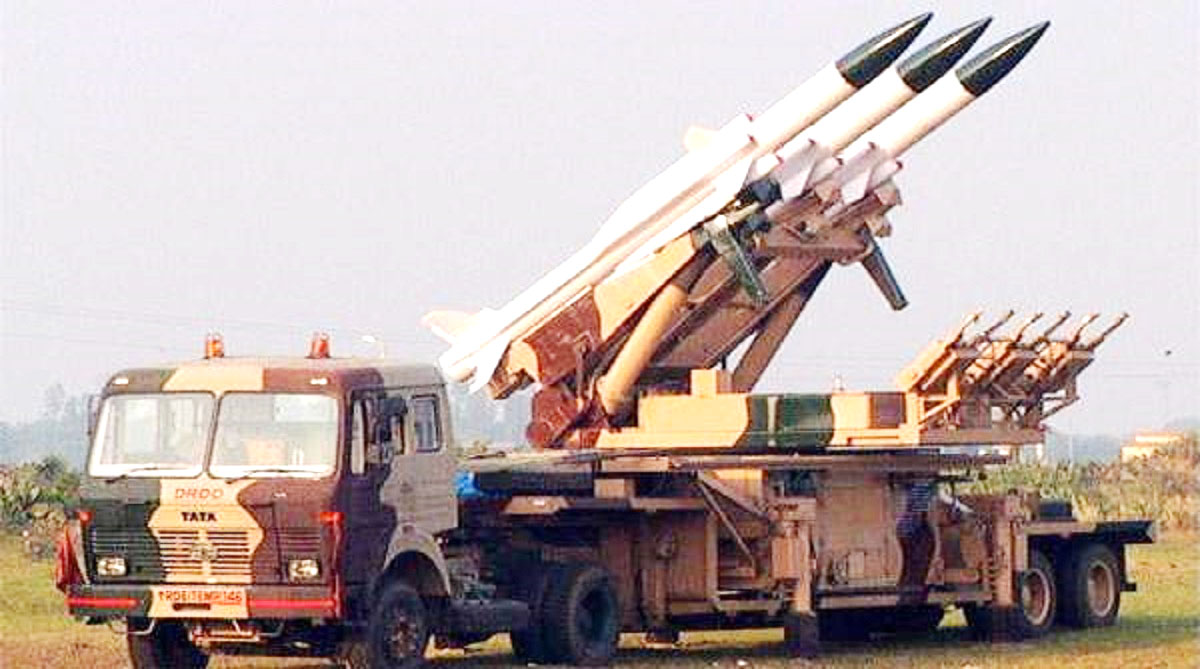
- It is a surface to air missile developed jointly by DRDO, India and Israel Aerospace Industries (IAI), Israel for use by the Indian Army.
- It consists of a command and control post, multi-function radar and mobile launcher system.
- MRSAM:
- It is a high response, quick reaction, vertically launched supersonic missile, designed to neutralize enemy aerial threats – missiles, aircraft, guided bombs, helicopters.
- Supersonic missiles exceed the speed of sound (Mach 1) but they are not faster than Mach-3.
- It is used by the Army, Navy and Air Force as different variants.
- In May 2019, Indian Navy, DRDO and IAI conducted the maiden co-operative engagement firing of the naval version of the MRSAM.
- It is a land based variant of the Barak Air and Missile Defence System (AMD).
- India buys Barak AMD from Israel, it was designed and developed by Israel to protect its economic zones and strategic facilities from various threats.
- The missile’s management system uses the radar to track and correctly identify the target, calculates the distance from it and gives all the information to the Commander for a decision to be made on interception.
- The missile itself is 4.5 metres in length with a weight of around 275 kg.
- It is equipped with fins and canards to stabilise its flight and provide it manoeuvrability.
- The missile is powered by a solid propulsion system coupled with a thrust vector control system.
- It can engage multiple targets upto a range of 70 km.
- It is a high response, quick reaction, vertically launched supersonic missile, designed to neutralize enemy aerial threats – missiles, aircraft, guided bombs, helicopters.
UPSC Civil Services Examination, Previous Year Questions (PYQs)
Q. From which one of the following did India buy the Barak anti-missile defence systems? (2008)
(a) Israel
(b) France
(c) Russia
(d) USA
Ans: (a)
Important Facts For Prelims
Zoji la Pass
Why in News?
Recently, Zoji la Pass has been opened for Civilian Traffic over Ladakh from Sonamarg.
- Zoji la is located in Drass, Ladakh at an altitude above 11,650 ft and historically remains closed for the major part of the winter season.
What is Zoji La?
- Zoji La is a high mountain pass located in the Kargil district of Ladakh.
- The pass links Leh and Srinagar and provides an important link between Union Territories of Ladakh and Kashmir.
- Zoji la is known as the “Mountain Pass of Blizzards”.
- Zojila pass remains closed during winters due to heavy snowfall, cutting off Ladakh region from Kashmir.
- In 2018, the Zojila tunnel project was launched. The tunnel is Asia's longest and strategic bi-directional tunnel, which will provide all-weather connectivity between Srinagar, Kargil and Leh.
Major Passes in the Himalayas
Important Facts For Prelims
35th Surajkund International Mela
Why in News?
The 35th Surajkund International Crafts Mela 2022 is being held from 19th March, 22 to 4th April, 2022 in Faridabad, Haryana.
- This fair is held every year in the month of February, however, the schedule was revised this year due to the Coronavirus. The annual fair in Faridabad was last held in 2020.
Key Points
- The Mela is organized by the Surajkund Mela Authority & Haryana Tourism in collaboration with Union Ministries of Tourism, Textiles, Culture and External Affairs.
- The Mela was initiated in 1987 to promote the pool of skilled artisans, who used indigenous technology, but were suffering due to the cheaper machine-made imitations.
- The fair was upgraded to an international level in 2013.
- The Surajkund Mela showcases the richness and diversity of the handicrafts, handlooms and cultural fabric of India, & is the largest crafts fair in the world.
- Jammu & Kashmir is the ‘Theme State’ and Uzbekistan is the “Partner Nation” for the year 2022.

